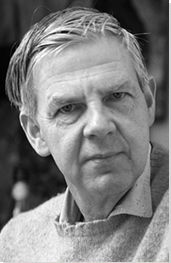Summary of Arthur Boyd
Boyd was one of Australia's most widely respected and prolific modern artists. A man of strong moral conviction, his most important paintings conveyed his deep concern for humanitarian matters and Australia's natural environment; themes he often brought together in a single canvas. Boyd's painting style, which has seen him described as a "figurative Impressionist", was often informed by biblical sources and carried lyrical allegories on themes such as wartime genocide and the plight of dispossessed Aboriginal communities. His painting also addressed the topics of family relations, religious faith, and the conflicting human emotions of love and aggression.
Accomplishments
- Boyd was profoundly affected by the onset of World War Two and the large number of refugees, and those deemed "unfit for service", wandering the city streets of Melbourne. These pieces, including key works such as The Gargoyles, formed part of his drive to not only represent the sense of desolation felt by the displaced and dispossessed, but also to create an alternative historical perspective on Australia's war years.
- Boyd's famous postwar "religious" series revealed European influences as wide reaching as Impressionism, Surrealism, and Social Realism. His great triumph was to develop a uniquely Antipodean painterly style that also represented a personal sense of mental chaos (triggered specifically by newsreel images of the Nazi death camps). Within his intense vision of personal torment, however, one could always seek out and find hidden symbols of love and hope.
- Having seen first-hand the poor conditions under which Aboriginal people lived, Boyd produced his expansive Brides series; the "Bride" representing a person of mixed descent who is an outcast in both Aboriginal and white communities. The curator Kendrah Morgan suggested that "In terms of Boyd's attempt to raise awareness of discrimination against Indigenous people", the Brides series stands as "a milestone in the advancement of [Australian] modernism".
- In his later career, Boyd produced his Nebuchadnezzar (Babylonian king) series of landscapes set in the tangled Australian bushland. The works were a form of catharsis that helped Boyd process Australia's (unnecessary) involvement in the Vietnam war and childhood recollections of seeing his own father in the grip of epileptic seizures. In art critic John Neylon's opinion, these works stand as the epitome of the "topography of modern Australian art as a primal landscape".
The Life of Arthur Boyd
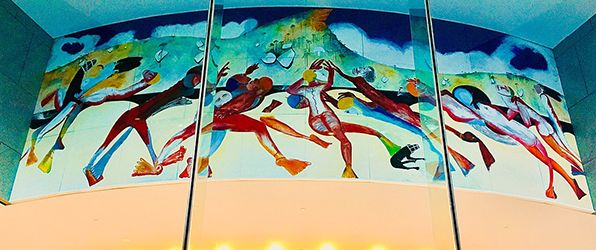
Responding to the general view that he was at the very forefront of Australian modernism, Boyd mused "I like to feel that through my work there is a possibility of making a contribution to a social progression or enlightenment".
Important Art by Arthur Boyd
Cape Schanck
This landscape, painted in muted greens, blues, and browns, represents an experimental stage of Boyd's earlier years. Still a teenager, he was living with his paternal grandfather, Arthur Merric Boyd, also a landscape painter, on the Mornington Peninsula not far from the Cape. Boyd made frequent trips to the local bushland, and on one of these trips he met fellow painter Wilfred McCulloch. The two artists became fast friends, as they shared a strong interest in the work of the French post-impressionist painters. Together, Boyd and McCulloch made frequent excursions to an artist's camp near Cape Schanck, where they painted en plein air.
Boyd once stated "My whole background has been that painting outside, plein air painting, was a kind of picnic. You went outside to absorb and take in, and be swamped, in a sense, by the landscape". Boyd experimented with his palette-knife technique, first introduced to him by his grandfather, which he used to create many landscapes and seascapes, and which would become his signature style of painting. He was particularly fond of this more tactile approach to painting, and also wished for audiences to enjoy art in the same way, once even instructing a gallery to "let them [the viewers] touch the paintings!".
Oil on canvas
The Gargoyles
In this surrealistic work, executed through rough, expressionistic brushstrokes, two figures, representing fear and foreboding, are seen standing outside of a hacienda-like building. The smaller figure stumbles and cowers, clutching his face as blood appears to flow from his eye sockets. The larger figure, a crutch under left arm, with eyes closed, and arms stretched out and upward, faces three large gargoyles perched on the building. All the gargoyles, mouths wide open, look beyond the frame across the barren landscape. According to Boyd, the creatures are warding off evil, but are struggling to keep up with all that is happening in the world.
Around the time that World War Two broke out, Boyd moved to Melbourne's inner city where he saw and met many European refugees on the streets. He produced several works inspired by these, and other "un-heroic", individuals, and the writings of great Russian novelist Fyodor Dostoyevsky (who was famed for capturing the psychological complexity of his characters). These paintings, writes artist Sue Smith, included "images of cripples and those deemed unfit for war service, [and] were considered painful images of the dispossessed and the outcast". Raised as a pacifist, wartime was psychologically challenging for Boyd since it emphatically brought home the precariousness (and preciousness) of life. As the artist Margaret Pont summed up: "The dynamic treatment in his compositions" of this period conveyed the artist's "agonized sense of desperation".
Oil on cotton gauze on cardboard - National Gallery of Australia, Canberra
The Mourners
A mass of figures dressed in vividly-colored clothing crowd around a naked crucified Christ figure wearing a crown of thorns. The scene is set under an ominous sky, in a scrubby, wooded area (based on the landscape to the south of Melbourne). The figures all bear distressed expressions, with many embracing and comforting one another, and others openly weeping. As in Boyd's other paintings of the 1940s, the work reveals the influences of Post-Impressionism, Surrealism, and Social Realism, with a painterly style that intensifies the sense of mental anguish in the figures.
While the world took to the streets to celebrate the end of hostilities, Boyd drew on the examples of Pieter Bruegel the Elder and Hieronymus Bosch as a means of working through the moral chaos that the war had given rise to. This painting was one of a series of about fifteen biblically themed works executed by Boyd between 1945-48 after he was discharged from the war service. The painting was his specific response to the horrors of the Nazi concentration camps as revealed to the world through emerging newsreel films. Boyd's friend, Austrian art historian Franz Philipp, wrote of The Mourners (and others in the series, such as, The Mockers), that "Boyd depicts mankind rather than man, mankind in the historical fullness of its fallen state (man as historico-political animal), man as crowd, as chorus of hatred without protagonists, and with the victims so far removed that destructive frenzy is without object and self-devouring".
In his assessment, the Australian art critic Christopher Heathcote added that, "This is Australian modern art in its most intense, emphatic form. A perplexing complex composition, the artist uses it to work his way through deeply-felt fears that the entire world had succumbed to corruption and festering evil". Yet Heathcote also singled out Boyd's inclusion of symbols of hope, such as the cockatoos that fly overhead, which here serve as a national symbol of peace and spiritual presence (the cockatoo replacing the dove in Australian culture). Also, the two lovers (a bridal couple) laying beneath a dead tree at the upper left symbolize "renewal, fertility and the restorative qualities of divine love". Says Heathcote, "[Boyd's] message is direct: love will conquer evil".
Oil on composition board - Private Collection
The Expulsion
In this work, another in his series of biblically themed post-war paintings, Adam and Eve are placed center frame, cowering as they flee from the Garden of Eden. Adam clutches his head in his hands, and Eve attempts to protect her modesty with a twig, as a large red-haired "angel", who floats above them, appears to holler in his attempt to drive them out of Eden. The Garden of Eden is represented here as the Australian wilderness, though Boyd renders the landscape in a style that recalls early Renaissance painters like Masaccio.
The Expulsion is generally believed to have been inspired by a particular event, during which Boyd and his new lover (and future wife) took some army blankets, and spent a night camping under the stars. When they awoke, they discovered that they had been sleeping dangerously close to a crevasse, which frightened Boyd. Adding to his woes, the army charged Boyd with stealing the blankets, which merely catalyzed his detestation of the military and all that it stood for: destruction, death, and invasion of land and the personal lives of individual citizens. Said Boyd, "I see lovers as victims [...] They suffer from being unprivate, watched. Love becomes guilt because it is frustrated".
Oil on hardboard - Art Gallery of New South Wales, Sydney, Australia
Boat Builders, Eden
In this work, a group of men build boats in Eden, a coastal town in New South Wales, known for its beautiful scenery and its forestry and fishing industries. Visible in the scene are a number of boathouses and workshops, as well as recognizable landmarks like the fishing wharf of Eden's Twofold Bay, and, further in the distance, Lookout Point Lighthouse and Mount Imlay. This work, with its overt biblical reference, contains elements inspired by Bruegel's religious paintings, such as The Gloomy Day (1565) and Tower of Babel (1563).
In sharp contrast to his more morose wartime paintings, this work, with its vivid color palette, offers an emphatic sense of hope and positivity. Here, the boat builders - who call to mind Noah and his family building the arc - symbolize rebirth and reconstruction of society, or rather, the building of a better world, following the devastation of a second world war. As opposed to the painterly aesthetic of his earlier wartime paintings, in which the rough strokes of oil paint add to the sense of pictorial anxiety, Boyd opted instead to use egg tempera for this work, carefully layering the semi-transparent pigments to create a shimmering surface and an overall sense of calm, tranquility, and, as curator Ron Radford put it, "peaceful activity".
Oil and tempera on composition board - National Gallery of Australia, Canberra
Pear Pot
Established in Murrumbeena in 1944 by Boyd, John Perceval and Peter Herbst, AMB Pottery (translating to Arthur Merric Boyd in honor of Boyd's grandfather) emerged as one of Australia's most innovative post-war potteries. The workshop made a vital contribution to the twentieth century Australian ceramic arts and directly influenced a new generation of dynamic earthenware potters who emerged in post-war Melbourne. This pot, one of Boyd's later works, has a simple rounded shape, and is painted with yellow pears and green leaves. Boyd learned about pottery-making at a very young age from his father who taught him that "The first impulse of the maker of hand-pottery is to obtain pleasure in making and decorating an article, and making that pleasure intelligible [...] the use of our own fauna and flora is of the first importance". Indeed, indigenous Australian vegetation and animals such as kangaroos frequently appeared on Boyd's pottery.
The founding of the workshop coincided with the post-war demand for functional domestic wares (like ramekins, bowls, saltshakers, cups, dishes, and mugs), however, by the late 1940s, the focus of the collaborative workshop shifted to the production of more experimental and vibrantly colored earthenware pieces, including coffee and tea sets, bowls, carafes, plates, jugs, decanter sets, vases, and tiles. The generic AMB pieces were mainly unsigned or inscribed on the base with the "AMB" stamp, however, handmade works by Boyd, Perceval, and Herbst were signed with their names or initials. By 1955, Boyd parted ways with Perceval and Herbst, and in 1958 he closed the workshop for good, although he continued to experiment with pottery-making and ceramic painting throughout his life.
Terracotta - National Gallery of Australia, Canberra
Reflected Bride 1
While visiting central Australia in 1951, Boyd encountered Aborigine communities for the first time and was shocked at the sight of their basic living conditions. The former director of the National Gallery of Australia, Brian Kennedy, described a specific incident in which Boyd was travelling the road to Alice Springs and "witnessed a truck carrying a group of Indigenous brides, whose white wedding finery contrasted sharply with the rudimentary vehicle normally used for transporting cattle". This event was the impetus behind Boyd's "Love, marriage and death of a halfcaste" [sic] series - better known as the "Bride" series - which became, in Kennedy's words, "an elaborate morality tale of an Indigenous trooper, a half-caste, and his half-caste bride" that touched on the themes of alienation, courtship, marriage and death.
Between 1955 and 1958, Boyd painted 31 Bride paintings, of which ten, brought to mind the paintings of Marc Chagall. Part of the series, Reflected Bride 1 was "a remarkable and memorable image, reminiscent of the story of Narcissus, condemned to fall in love with his own reflection". As Kennedy observed, Boyd was "certainly aware of [...] Chagall's haunting and beautiful paintings of a levitating bride and groom" and that Chagall's "bridegroom also had a green jacket with brass buttons and dark trousers". But whereas Chagall's work was decorative and poetic, Boyd's painting carried "a pervasive magical and somewhat menacing atmosphere [in which] the figures and the landscape are one. The bride rises from the stream, an Ophelia caught by a groom whose foot hooks a tree. The bride is staring at an absurd mask-like white bride's head which appears to glow out of the forest. This is a surreal wilderness, a strange place of nightmarish dreams".
Kennedy, notes that Boyd's painting became part of "a contemporary trend among artists and writers who argued in favour of improved conditions for Australian Indigenous people", and that Boyd, and others such as Yosl Bergner, Noel Counihan, James Wigley, Peter Graham and Russell Drysdale, "sought to make a moral issue of the desperate plight of Indigenous people". Kennedy also suggests that the Bride series was very likely a response to Charles Chauvel's feature-length movie, Jedda (1955) - a romantic tragedy that tells the story of an Indigenous girl adopted by a white family who is courted by an Indigenous outsider - which was the first to give leading roles to native Australians. Boyd's series also sat next to Sidney Nolan's "Eliza Fraser" (a shipwrecked white woman who is adopted by an Indigenous community) paintings, and Patrick White's Voss, a book also dealing head-on with the difficulties facing people in mixed raced relationships. Kennedy concluded that "The 'Bride' paintings are among the greatest expressions of conscience by an Australian artist. Brilliantly executed and of sustained quality, Reflected bride 1 speaks to contemporary Australia, beseeching reconciliation, understanding and a tolerant, compassionate meeting of old and new cultures".
Oil and tempera on composition board - National Gallery of Australia, Canberra
Nebuchadnezzar on Fire Falling over a Waterfall
Coming from a series the Art Gallery of New South Wales called "the most sumptuously executed paintings of his career", this somewhat abstract, expressionistic, work, shows a fiery red and yellow form - the biblical figure of Nebuchadnezzar - crashing down from the sky onto a scrubby landscape with a waterfall at its centre. Recalling the story of Icarus, who flew too close to the sun and fell to the earth in flames, the work belongs to Boyd's Nebuchadnezzar series which comprised thirty-four paintings made between 1968 and 1972 while the artist was living in London. In the book of Daniel, the Babylonian king (Nebuchadnezzar) grows increasingly self-involved, proud, and arrogant. As punishment for his hubris, God turns Nebuchadnezzar into a madman, reducing him to an animal that crawls around the earth on all fours ("driven from men, and did eat grass as oxen, and his body was wet with the dew of heaven till his hairs were grown like eagles' feathers and his nails like birds' claws" (as the Old Testament tells it)).
According to historian Veronica Angelatos, by "Projecting his Nebuchadnezzar with Lear-like characteristics, Boyd embarked upon many more versions of the theme [and the] series was, and still remains, his most sustained [body of work]". Angelatos notes also that the Nebuchadnezzar series was produced during the height of the Vietnam War when the world was being assailed with mass media images of death, torture and human suffering. Boyd, whose opposition to the war was well documented, was doubly traumatized by an act of a self-immolation (a protest against the Vietnam War) on London's Hampstead Heath which occurred close to his North London home.
T.S. Boase (quoted by Angelatos) suggested that story of Nebuchadnezzar was "a subject that leads immediately into Boyd's preoccupation in many other works with the fusion between man and natural forces [and] the involvement of man and beast". Indeed, one sees here a second major influence on the series which related to his own father's struggle with epilepsy, which Boyd, believing his father to be possessed by some sort of demon, experienced as a form of childhood trauma. Boyd said of these works, "I had to paint these things to un-see the trauma".
Oil on canvas - Art Gallery of New South Wales, Sydney, Australia
Shoalhaven River
Boyd returned home in 1971 and was looking to rediscover the Australian landscape having spent several years surrounded by England's lush green countryside. On the recommendation of the art dealer Frank McDonald, Boyd and his wife settled along the Shoalhaven river on the south coast of New South Wales. Boyd fell in love with the surrounding area and especially its Nowra sandstone cliffs and wild shrubbery. The Shoalhaven landscape became one of his most enduring subjects and occupied him into his final years.
In this work he paints the Shoalhaven riverbank in bright, crisp blue, and muted pastel tones. Curator Melissa Hellard writes that Boyd "employed a looser painterly technique, as the artist grew to recognize the subtleties of the region" and that, as he often did, he painted this work "with his hands, a method which enabled greater intimacy with and devotion to the subject. This physical act allowed the artist to paint with strong intent, capturing the essence of the landscape and its many nuances". Boyd's biographer Janet McKenzie added, "The natural beauty of the Shoalhaven area caused Boyd to marvel constantly. His paintings are a celebration of the grandeur and wonder of Nature. It is to Boyd's credit that a single landscape can inspire such diversity of work. He gives us the impression that in life there are infinite possibilities, as long as we train ourselves to see". While many of Boyd's other Shoalhaven paintings include human figures and the boats and recreational water vehicles that can usually be seen on the river, he opted in this image to omit all of these, presenting the landscape as untouched and unspoiled.
Hellard observed finally that, "Having always delighted in his painting trips along the river, Boyd believed his magical Bundanon property should belong to the Australian people. Shortly before Shoalhaven River was painted, the property was gifted to the Australian Government, to be preserved forever, in the hope that future generations may also be inspired by the beauty and brilliance of the Shoalhaven River".
Oil on canvas - Private Collection
Biography of Arthur Boyd
Childhood
Arthur Merric Bloomfield Boyd was one of five children born to Merric and Doris Boyd. Boyd's grandparents (Arthur and Emma Boyd) were both accomplished painters, exhibiting at London's Royal Academy and in various galleries in Melbourne. Arthur Boyd (Snr) was also affiliated with the late nineteenth-century en plein air Heidelberg School. The Boyd's were very well off, living a genteel life of travel and art thanks to a substantial inheritance. In addition to the family home in Murrumbeena (a suburb of Melbourne) they owned properties in the UK, Melbourne and on Victoria's Mornington Peninsula.
In 1913, Merric Boyd designed "Open Country" on family land in Murrumbeena. Open County was conceived of as a home workplace and meeting place for the extended Boyd family and other creative individuals (notable visitors included Sidney Nolan, Albert Tucker, Joy Hester, Yosl Bergner and John Perceval). Merric and Doris (nee Gough) married in 1915 and it was she who became the driving force behind the family business. Boyd recalled how his mother was "the backbone of the family", suggesting that "without her, the entire family would have fallen apart". Boyd's father, on the other hand, was more of an idealist; a kindly man who raised his children to respect nature and all living creatures. His paternal grandmother, too, who was a devoutly religious woman, would also read young Arthur parables from the bible.
Merric Boyd suffered from severe epileptic episodes. However, in the early twentieth century the medical profession did not fully understand the illness. As curator Barry Pearce explained, many medics still believed that epilepsy "was a condition where a demonic alter ego inside is released, coming out through sound, through contortion. Like the horror movies: an alien force inside the normal human body". Pearce added that "As a child Arthur asked, 'What is the creature inside my father?' The trauma entered his DNA". When Boyd was still just six years old, his father, who was considered a pioneer in Australian studio pottery, was experimenting with high heat in a gas kiln. His trials led to a fire that resulted in the destruction of the studio and recipes for glazes. As a direct result of the accident, Merric suffered a breakdown and his epilepsy worsened. The tragedy also led to deep financial difficulties for the family.
Education and Training
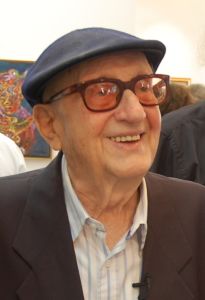
Despite winning the First Award for Art for three years in a row at the Murrumbeena State School, Boyd left school at fourteen, and worked briefly in his uncle's paint factory, using his wages to help support his struggling family. The fifteen-year-old Boyd briefly attended classes at the National Gallery School in Melbourne. While there he painted portraits of his siblings and self-portraits. He also fell under the influence of the Jewish immigrant artist Yosl Bergner who introduced Boyd to novelists such as Fyodor Dostoyevsky and Franz Kafka; writers who would help shape his humanitarian worldview.
When Boyd was sixteen, he moved in with his paternal grandfather on the Mornington Peninsula at Rosebud. Under Arthur Snr's guidance, Boyd developed his skills by focusing on portraiture and seascapes of Port Phillip. He enjoyed exploring the nearby bay and creeks by boat, and constructed a cart so that he could carry painting supplies behind his bicycle.
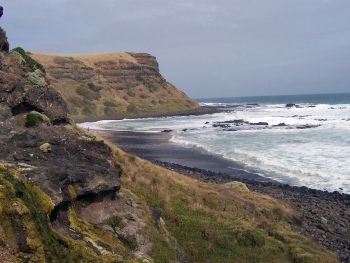
Around the time of the outbreak of World War Two, Boyd moved to central Melbourne where he came into contact with a number of European refugees and Australian nationals whose physical disabilities barred them from joining the war service. These displaced and desolate souls were the first inspiration for the tortured characters that would populate many of his later paintings. Although Boyd did not face combat duty himself - he was conscripted in 1941 to serve with the Cartographic Unit - he produced several paintings that, according to the artist Sue Smith, were "painful images of the dispossessed and the outcast".
On March 6, 1945 Boyd married fellow painter Yvonne Lennie whom he had met while in military service. They lived at Open Country, and Arthur's first studio was built in the grounds there from a modernist design by his cousin, Robin Boyd. Soon after, Boyd, John Perceval (his brother in law) and Peter Herbst founded the Arthur Merric Boyd Pottery Workshop at Murrumbeena where he and his colleagues turned their attentions to pottery, ceramic decoration, and sculpture. Meanwhile, Boyd created a series of paintings, including two of his best known, The Mourners and The Expulsion, that drew on biblical narratives of human cruelty as a way of broaching the theme of horror and suffering in war. Boyd liked to touch the paint, using his hands and fingers to manipulate his oils; like a potter would shape his or her clay. Indeed, Boyd disliked being called an "artist" and dismissed it as a "phoney romantic" ideal when he saw himself rather as "a painter [...] a tradesman".
In the late 1940s and early 1950s, Boyd travelled throughout the Wimmera countryside of Victoria and Central Australia, devoting his energies to landscape painting. In 1951 he visited Alice Springs where he met Aborigines for the first time and was shocked at their near destitute living conditions. This experience initiated his Love, Marriage and Death of a Half-caste series of 31 paintings (also known as The Bride) which represented the Aboriginal figure of mixed descent as a maltreated outcast. He later said: "I'd like to feel that through my work there is a possibility of making a contribution to a social progression or enlightenment" but the Bride series, when first exhibited in Melbourne in 1958, caused considerable controversy.
During this time, Boyd also formed close friendships with members of the modernist Heide Circle of artists. These included Albert Tucker, Joy Hester and Sidney Nolan, and the art patrons John and Sunday Reed. Boyd, however, maintained a cool distance from the group and its hierarchical structure, preferring to root his artistic identity in the Boyd family. Nevertheless, he felt an allegiance with the Heide artists' commitment to Figurative Modernism as opposed to the fashion amongst many modernists for abstraction.
Mature Period
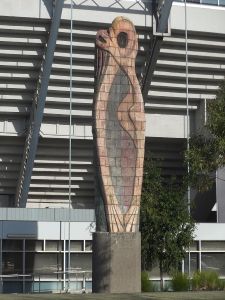
In 1958, Boyd, with fellow Australian landscape painter Arthur Streeton, represented Australia at the Venice Biennale. The following year, he became affiliated with a newly founded group of Melbourne-based artists (with Charles Blackman, David Boyd, John Brack, Robert Dickerson, John Perceval, and Clifton Pugh) who called themselves the Antipodeans, and who, like the Heide circle of artists, worked to promote figurative painting.
In 1959, a year after the death of his father, Boyd and his family relocated to London where they lived until 1971. The move, which coincided with the Antipodeans exhibition at the Whitechapel gallery, saw Boyd earn a living by designing sets for the ballets and operas, and by producing etchings and ceramic paintings. In 1966, he made his only trip to Paris, along with fellow Australians Sidney Nolan and Barry Humphries, to view a major Picasso exhibition. Boyd made frequent trips to London's National Gallery where he became captivated by the works of Poussin, Veronese, Tintoretto, Piero di Cosimo, and Rubens, as well as other Venetian, Sienese and Florentine painters. During a trip to Venice, meanwhile, he fell in love with the works of Giorgione.
The art critic Bryan Robertson noted that, "Some aspects of Boyd's painting could be said to have been marginally affected by American art, notably Abstract Expressionism, but Boyd's allegiances were as direct to European art as his roots were in the splendid Australian impressionism". Boyd's years in England had in fact marked a more intense focus on Australian subjects and landscapes. The eminent English art historian and museum director Kenneth Clark was one of the first European collectors to support Boyd, purchasing one of his paintings of the Australian outback. Boyd's stay in London was capped off in 1970 when he was appointed an Officer of the Order of the British Empire (OBE) for his services to the arts.
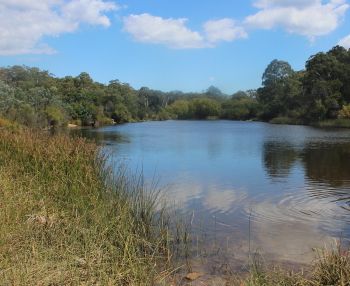
In 1971, Boyd and his family returned to Australia, eventually settling at Bundanon on the Shoalhaven River in New South Wales where he continued to paint landscapes. Boyd was awarded a Creative Arts Fellowship from the Australian National University and, in 1975, donated several thousand works including pastels, sculptures, ceramics, etchings, tapestries, paintings and drawings, to the National Gallery of Australia. The following year, he was appointed an Officer of the Order of Australia for his service to the visual arts. Around the time that his son, Jamie, came of age for military service, Boyd signed a petition protesting against Australia's involvement in the Vietnam war.
Although he would continue to return periodically to England (always by boat, as he feared flying), Boyd and his wife Yvonne settled permanently on the Shoalhaven River in 1978, where they purchased two properties at Bundanon and Riversdale. Boyd built additions onto the preexisting buildings at both sites to extend the homes and created new studio spaces. The rugged scenery surrounding the Shoalhaven river inspired many of his later landscape paintings.
In 1979, the ABC and BBC TV networks co-produced a documentary film, A Man of Two Worlds, based on Boyd's life and work. In the early 1980s, he protested against sand mining on the Shoalhaven river, one of Australia's greatest natural assets. Around that time, he was made an Honorary Doctor of Letters by the University of Melbourne and in 1982 he donated his family villa in Paretaio, Tuscany to the Australia Council's artist-in-residence program. This gesture was followed by his so-called Australian Scapegoat series. Featuring violent imagery and archetypes associated Australian military history (to once more condemn the futility of war), Boyd explored constructions of Australian identity in the lead up to the bicentenary of the arrival of the First Fleet in 1988.
Late Period and Death
In 1988, Boyd was commission by Time Magazine to paint Earth and Fire as the cover for a special issue about environmental conservation in Australia. In 1993, a major retrospective of his work was held at the Art Gallery of New South Wales. In 1997, he and other family members (his brothers, his son Jamie, and nieces Lenore and Tessa Perceval) held an exhibition of painting and sculpture titled The Best of Boyd at the Galeria Anjela Fine Art Gallery and Sculpture Park in New South Wales.
Boyd again represented Australia at the Venice Biennale in 1988 and 2000. In 1992 he was appointed Companion of the Order of Australia, and, in 1995, Prime Minister Paul Keating named Boyd "Australian of the year" in recognition of his contribution to Australian art, and his philanthropic work. Three years later, the Australia Post produced a series of stamps featuring Boyd's photograph and images of his works. In February 1999, aged seventy-eight, Boyd suffered a heart attack during a return journey from England. He recovered and was released from hospital, but suffered a second, fatal, heart attack on April 24. He was survived by Yvonne and their children, Jamie, Polly, and Lucy who all continued to work as artists.
The Legacy of Arthur Boyd
According to Edmond Capon, the Director Art Gallery of New South Wales, "Few Australian artists have cast their vision across so broad a landscape of ideas and traditions, both real and mythological, as Arthur Boyd and few have sustained their creative powers with such force and energy". His landscapes, biblical allegories, and other works, many of which foreground the wild beauty of the Australian wilderness, served as a model for subsequent generations of Australian artists. Most notably, through his involvement with the Heide circle of artists, and the Antipodeans, he participated in the promotion of figurative art at a time when abstraction was dominating the art market, inspiring other Australian artists, like Piers Maxwell Dudley-Bateman, Robert Dickerson, and John Brack, to do the same.
Moreover, Boyd's commitment to foregrounding humanitarian and social issues in his works gave his art a deeper, more universal value. In this way, he connected art with everyday life and pressing issues relevant to each historical moment he lived through. Curator Barry Pearce notes that Boyd struggled with the demands of the commercial art market, stating that "he found it very hard being enslaved to the collectors [and] was constantly riven with anxiety". Despite his reservations, however, John Neylon summed his importance to Australian modernism when he wrote: "Along with others of his generation ([Sidney]Nolan et al) Boyd represented, for aspiring young artists in the 1960s, a model of what art should be about - defiantly different to all the Australian art that had gone before. When Nolan populated his 'Australian' landscapes with mytho-poetic figures, emerging local artists were inspired. Boyd also fuelled this hunger for new, creative narratives about Europism Down Under. But he was, and remains, remarkably different".
Influences and Connections

-
![Vincent van Gogh]() Vincent van Gogh
Vincent van Gogh -
![Marc Chagall]() Marc Chagall
Marc Chagall -
![Nicolas Poussin]() Nicolas Poussin
Nicolas Poussin -
![Paolo Veronese]() Paolo Veronese
Paolo Veronese - Piero di Cosimo
-
![Sidney Nolan]() Sidney Nolan
Sidney Nolan - Wilfred McCulloch
- Yosl Bergner
- Albert Tucker
- Joy Hester
- Piers Maxwell Dudley-Bateman
- Robert Dickerson
- John Brack
- Peter Herbst
- John Perceval
- Franz Philipp
- Barry Humphries
- Arthur Streeton
- Antipodeans
- Figurative Modernism
- Heide Circle
 Ask The Art Story AI
Ask The Art Story AI